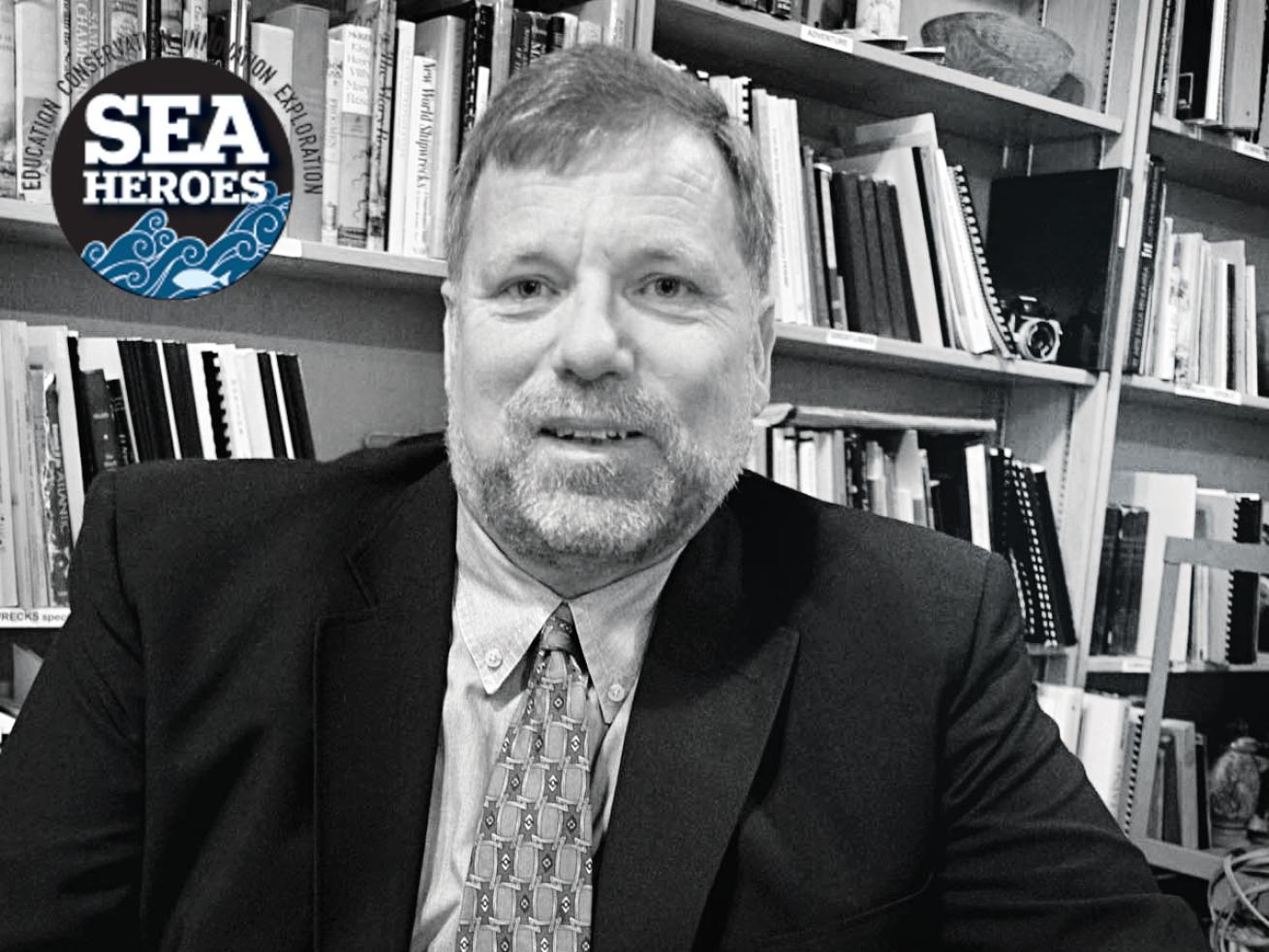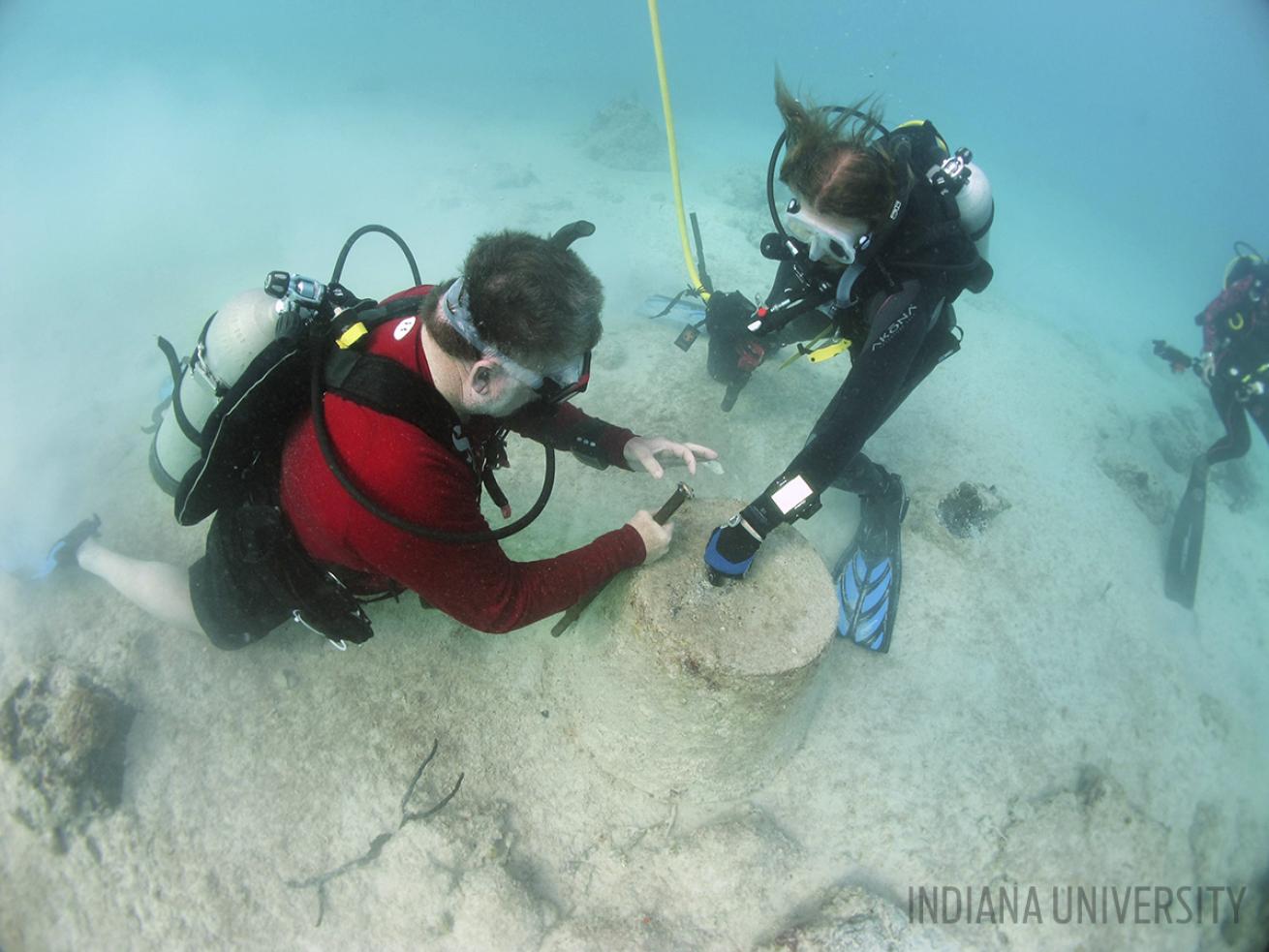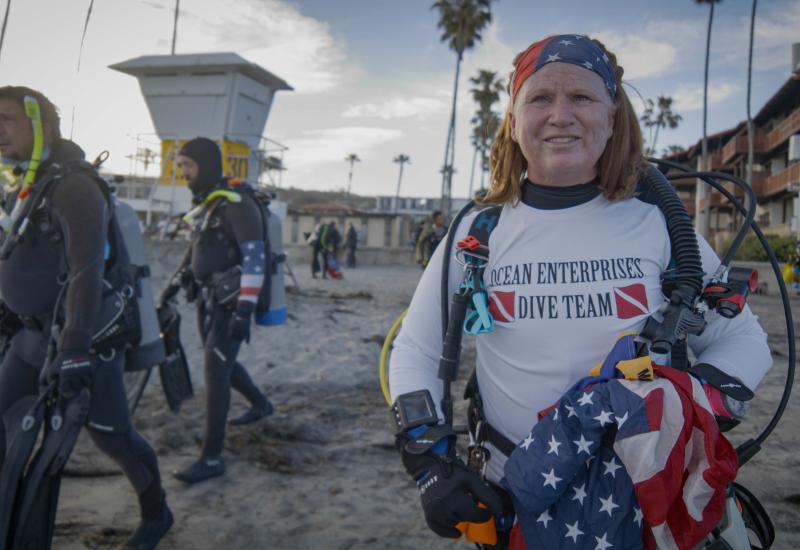Sea Hero Dr. Charles Beeker Honored for Preserving Shipwrecks in the Caribbean
Our Sea Hero program celebrates divers working to save our seas through action-oriented education, conservation, exploration or innovation. Nominate a Sea Hero

Courtesy Indiana University/Dr. Charles BeekerOur August 2016 Sea Hero Dr. Charles Beeker is the founder of the Dominican Republic's Living Museums of the Sea and is passionate about protecting shipwrecks.
Using shipwrecks to teach students about multidisciplinary investigation of submerged cultural and associated biological resources wasn’t enough for Dr. Charles Beeker of Indiana University. He’s also the man behind the Dominican Republic’s Living Museums of the Sea, a conservation model he hopes can spread to protect shipwrecks through the Caribbean and beyond. For that, and for inspiring generations of young people to take up the life aquatic, he is our August Sea Hero.
Q: You helped create the Dominican Republic’s Living Museums of the Sea program. Tell us a little bit about the project and why it’s important.
Dr. Charles Beeker: I was a member of the federal Archaeological Working Committee for the 1988 Abandoned Shipwreck Act, a U.S. law that protects historic shipwrecks from professional treasure hunting and private looting. Since then, I have assisted both California and Florida in establishing new shipwreck state parks as well as NOAA National Marine Sanctuaries in creating the Florida Keys National Marine Sanctuary Shipwreck Trail.
Driven out by the law, American treasure-hunting companies moved their operations out of the Florida Keys. Many found opportunities in the Dominican Republic, where they could salvage historic shipwrecks with a 50/50 split with the government.
In the late 1990s, when I decided to begin research — and provide my students with meaningful fieldwork opportunities in the Dominican Republic — it was important to show an alternative to the destruction of historic shipwrecks by commercial salvage. So, as with my earlier efforts in Florida, I applied a different approach to historic shipwrecks: Living Museums of the Sea, a model of multidisciplinary scientific investigations of submerged cultural and associated biological resources — a fancy term for my model of shipwreck investigations and management, where both the shipwreck and all life associated with it are considered equally valuable and managed for current and future generations.
I inaugurated my model in the Dominican Republic with three sites in 2011. Most important is the 1699 pirate shipwreck of Captain Kidd. An American treasure-hunting company had the permit to find and salvage the Quedagh Merchant, but after a two-year unsuccessful search the company ran out of funds. I was asked by the Dominican government to look at a candidate site, and reported it had potential to be the Quedagh Merchant. It took our team two years of research, including work in the British archives, India and Armenia, to prove the ship’s identity. Captain Kidd’s shipwreck had finally been discovered, and my efforts culminated with the inauguration of the Captain Kidd Living Museum of the Sea on the 310th anniversary of William Kidd being hanged at the Docklands Shipyard in London.
More importantly, as a Living Museum of the Sea, the site is now permanently protected for this and future generations.
Q: What’s the biggest challenge you have faced in your work in underwater preservation? (We hear there might have been bar fights with treasure hunters?)
CB: I tell my students that we are “selling history not artifacts.” Good scientific research that includes proper archaeological and biological documentation is paramount to informed management of all shipwrecks. Finding funds to accomplish this is much more difficult than finding investors lured by the promise of riches from the sale of pieces of history that are not theirs to be sold. The Living Museums of the Sea model provides a viable alternative to treasure hunters salvaging artifacts for sale. I like to tell my students — and anyone who will listen — “Treasure hunters can only sell their loot once; Living Museums sites are protected and can be sold forever, providing tourism and local economic benefits.” Yes, there was a bar fight with an investor in the Captain Kidd treasure-hunting venture, as well as some quite threatening communications to Indiana University administrators. But I am pleased to be with an institution that values my research and the opportunities provided to my students to be on the cutting edge of historic shipwreck-site protection and long-term management. Shipwrecks belong to us all, and should not be subject to private ownership for individual gain.
Q: You helped create IU’s underwater program and have inspired many students to pursue underwater exploration. What’s been your most satisfying moment exposing students to the underwater world?
CB: I have been training IU students in the use of scuba as a research tool needed to access the underwater world for over 40 years. Without a doubt, my most satisfying moment is the day a beginning student drops below the surface in our pool, breathing on scuba for the first time. For some, this is a life-changing experience, which I recognize and appreciate every time, including the responsibility to properly train and instill the right ethics and behaviors needed of us all to preserve irreplaceable resources for now and for the future.
Q: Tell us what you are working on now?
CB: I am very excited about an early 16th-century Spanish shipwreck in the Dominican Republic that has potential to provide new insights into Columbus-era voyages of discovery and colonization of the New World. To date, fewer than 20 ships of this age have been discovered worldwide, with a dozen in the Americas. Controversy surrounds the DR site, as it was treasure- hunted from 2011 to 2013, with hundreds of pieces of English and Flemish pewter ware removed and sold at an international auction in London.
Nevertheless, my recent inspection noted an exposed wood hull, numerous bombards and breech blocks (Columbus-era breech loading artillery, replaced by cast muzzle loaders by the mid-16th century), several anchors including a large “anchor of salvation” that would have been deployed during hurricanes or severe storms, hull fasteners, lots of copper and ceramic artifacts, and even horseshoes from among the first horses shipped to the Americas. The treasure-hunting company is trying to get renewed permits to salvage the site, while I am promoting the importance of the scientific investigation and the establishment of a new Living Museum of the Sea. We will see who wins, but if I were a betting man, I would bet on me.

Courtesy Indiana University/Mylana HayduDr. Charles Beeker along with a Matthew Maus, a researcher at Indiana University, install a mooring block in the Dominican Republic.
Q: How can Scuba Diving’s readers help further your work?
CB: By respecting the underwater environment and understanding that shipwrecks are important resources that should be protected for this and future generations. Laws can be made to protect underwater sites, but peer pressure and promoting an ethic of unobtrusive observers among all divers is the key to long-term protection, where underwater resources including shipwrecks remain underwater, undisturbed as much as possible, and are seen as a valuable public resource for all to enjoy.
Q: What’s next for you?
CB: In my efforts to set up the Living Museums of the Sea model on new sites and as well as monitoring sites we’ve already established, I will continue to teach and provide meaningful field research opportunities for my students. After a long career of establishing marine protected areas as Living Museums of the Sea, I have enough work to keep me and my students busy until retirement. My biggest hope for the future is to pass the model to the next generation so that it continues to inspire a holistic view of shipwrecks as integral components of the environment.
Q: Any final words?
CB: It’s important that we all contribute to protecting underwater resource, as the resiliency of our ocean is continuously being tested. In my 50 years of scuba diving and 40 years of teaching, I have seen major changes to the marine environment including the destruction of many historic shipwrecks. It’s imperative that we all take steps every day, however small, to help protect what we have.
Each Sea Hero featured in Scuba Diving magazine will receive an Oris Aquis Date watch worth $1,650. In March 2017, a panel of judges will select the 2016-2017 Sea Hero of the Year, who will receive a $5,000 cash award to further his or her work.










